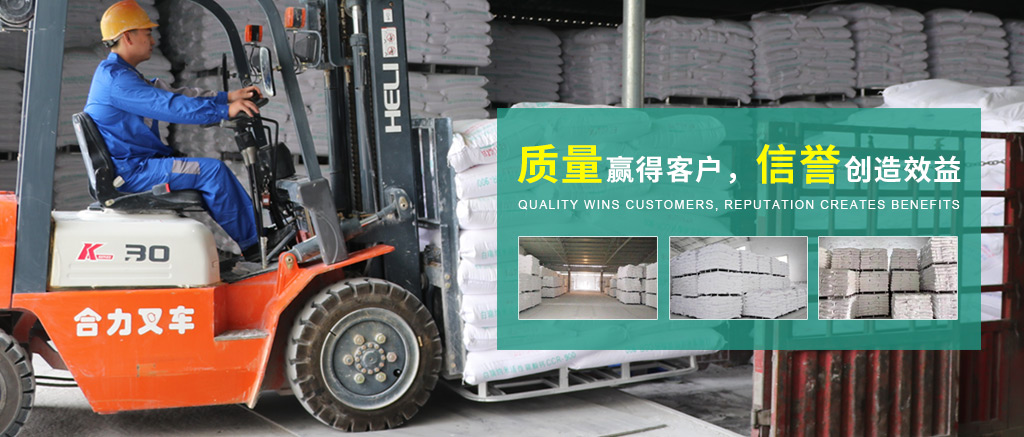5 surface modification methods of calcium carbonate
Time: 2020-03-03
1, calcium carbonate inorganic surface treatment
Calcium carbonate has the disadvantages of poor acid resistance and high pH value, so that its application scope and usage are greatly limited. When calcium carbonate is treated by inorganic surface modification, double electrostatic layer can be produced on the surface of calcium carbonate, which reduces the mutual repulsion between particles and reduces the accumulation phenomenon. At the same time, the hydrophilicity of calcium carbonate is increased, so that calcium carbonate can be well wetted in water, thus increasing the dispersion performance and expanding the scope of application.
2, calcium carbonate organic surface modification
Organic modification mainly refers to the chemical or physical method, the organic modifier is wrapped on the surface of calcium carbonate, so that the surface properties of calcium carbonate are changed, so as to increase the interface compatibility and reduce the agglomeration of powder, which is the most mainstream surface modification method of calcium carbonate.
3, calcium carbonate polymer surface modification
Polymer surface modification refers to the formation of a core-shell polymer layer on the surface of calcium carbonate particles. There are two main cases of polymer modified calcium carbonate: one is the formation of polymer chain segments by polymerization of monomer on the surface of calcium carbonate; The other is to dissolve the polymer in the appropriate solvent to form a polymer solution, and add calcium carbonate to it, and when the polymer gradually adsorbed to the surface of calcium carbonate, the solvent is removed to form a coating. In this way, the polymer can be directionally adsorbed to the surface of calcium carbonate, forming an effective adsorption layer, reducing the agglomeration of calcium carbonate particles, improving dispersibility, improving the shortcomings of poor dispersion performance of calcium carbonate during use, and achieving the purpose of surface modification
4. Mechanical and chemical modification of calcium carbonate
Mechanochemical modification is mainly the use of strong mechanical force to activate the surface of calcium carbonate particles, the crystal structure of the surface of calcium carbonate changes, so that the lattice moves to a certain extent, so that the reactivity between other substances is enhanced.
By using styrene monomer polymerization grafting method, Wu Wei et al. promoted the polymerization of styrene monomer on the surface of calcium carbonate by mechanical method, which reduced the amount of initiator, improved the mechanical properties of HIPS, and increased the compatibility between filler and matrix.
This method is mainly effective for calcium carbonate with relatively large particles, but for nano-calcium carbonate, due to its small particle size, the improvement effect of mechanical force is not very good, but it can activate some active sites and groups on the surface, which can enhance the interaction with organic surface modifiers. Therefore, nano-calcium carbonate can be modified by combining mechanical chemistry with other modification methods.
5, calcium carbonate high-energy surface modification
High-energy surface modification mainly uses high-energy rays, plasma and other methods to modify the surface of inorganic powder. The method mainly relies on high-energy rays and plasma sources to bombardment and touch the surface of calcium carbonate, so that some reactive sites are generated on the surface of calcium carbonate, and then add unsaturated monomer (such as vinyl monomer), unsaturated monomer can react with the active site on the surface to form a layer of coated organic film on the surface of inorganic particles.







 Home
Home  News
News
